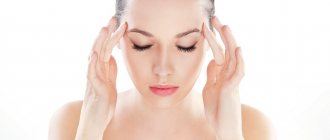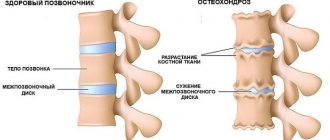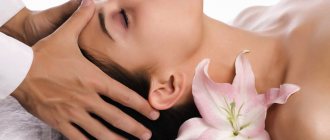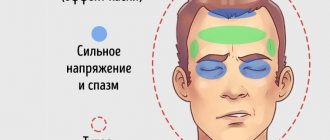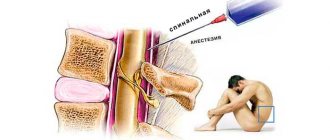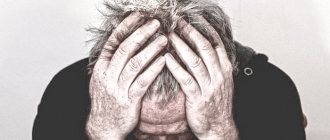Each of us has experienced a terrible headache at least once in our lives. One of its causes is hemicrania, or, more simply, migraine. This disease is neurological and most often occurs in women. Medical scientists have not yet found a way to cure this disease, but there are many methods in the world to relieve headaches. Exercise for migraines can help achieve positive results in relieving headaches.
With the help of exercises, you can relieve existing pain and prevent its attacks, because when performing yoga asanas, internal tension is relieved, muscles relax, stress and tension go away.
Yoga helps with migraines
Yoga for headaches
Yoga for migraines is one of the simple and safe methods of effectively getting rid of migraines. Its use helps normalize blood pressure, reduce stress levels, and regulate breathing.
To relieve headaches, you can use simple yoga asanas that do not require skill or preparation. You can do these exercises at home yourself. But it’s better to take at least a couple of lessons with an instructor to understand how to breathe and what to do. To practice at home, you only need to buy a yoga mat and special bricks. But in order to save money, the rug can be replaced with a regular blanket or blanket, and the bricks (blocks) with a folded blanket.
The first pose to do is tadasana or mountain pose. It is performed like this: you need to stand up straight, straighten your back, knees and feet should touch, arms down. Stay in this position for 1-2 minutes, breathe deeply and calmly. This asana adjusts the body to work properly.
Next, exercises are performed to treat pain. One of these poses is sarvangasana or “candle”. You need to lie on your back, stretch out your arms, raise your legs up, holding yourself with your hands behind your back. This also takes 1-2 minutes. Depending on the frequency and duration of classes, the time in this asana will need to be increased to 10-15 minutes. It helps normalize blood circulation and blood pressure.
Another pose for treatment is shashankasana (hare pose). To perform it, you need to kneel down, spread your legs slightly, sit down, stretch your arms up, bend over, touching your forehead and palms to the floor. Stay in this asana for 2-3 minutes. It relieves fatigue, tension, stress, which are the causes of pain.
Interesting: Migraine in women: symptoms and treatment at home
Herbs and mixtures for the treatment of migraines
1⁄2 tbsp. spoons of peppermint herb pour 1 glass of hot boiled water, cover with a lid and heat in a water bath, stirring constantly, 15 minutes. Cool at room temperature for 45 minutes. Strain and add boiled water to a volume of 1 cup. Take warm, 1/2–1/3 cup 1–3 times a day, 15 minutes before meals. Store the infusion in a cool place for no more than 2 days.
Infuse 2 teaspoons of open lumbago herb (sontrava, snowdrop) for 24 hours in 1 glass of boiled water. Drink the entire portion of the infusion cold during the day.
1 tbsp. Pour 1 cup of boiling water over a spoonful of elderberry flowers, leave for 30 minutes and strain. Take 50 ml with honey 3-4 times a day 15 minutes before meals.
1 tbsp. Pour 1 cup of boiling water over a spoonful of three-leaf watch leaf, leave for 2 hours, strain. Take 1⁄2 cup 2 times a day 30 minutes before meals.
2 tbsp. spoons of viburnum bark pour 2 cups of boiling water, heat in a water bath for 30 minutes, leave for 15 minutes, strain. Take 1 tbsp. spoon 3-4 times a day during attacks.
Pour 2 g of fresh rhizomes of the European ungulate into 1 glass of cooled boiled water, leave for 3 hours, strain. Take 1 tbsp. spoon 2 times a day during an attack. For migraine occurring with low blood pressure.
Take 1 part each of blackberry leaf, alder buckthorn herb, tansy flowers, motherwort herb, chamomile flowers, cudweed herb. Infuse and take 1⁄2 cup 3-4 times a day. During the premenstrual and menstrual periods.
Take 2 parts each of common raspberry fruit, coltsfoot leaf, 1 part each of oregano herb and cordate linden flowers. Take 1 glass as an infusion in the morning and evening. During the period of anticipation of a migraine attack.
Take 2 parts of cordate linden and common raspberry flowers, 1 part of rhizomes with roots of valerian officinalis, mistletoe herb, horsetail herb. Take 1⁄2 cup as an infusion 3 times a day before meals, warm.
Take 1 part each of the rhizome with the roots of valerian officinalis, elecampane root, alder buckthorn bark, mistletoe herb, kidney tea herb, bearberry leaf. Take 1⁄2 cup as an infusion 4 times a day, warm.
Take 3 parts of sage leaves, 2 parts of wormwood herb, 1 part of rhizome with roots of valerian officinalis and horsetail herb. Take 1⁄2 cup as an infusion 3-4 times a day. For headache attacks accompanied by increased sweating, nausea, and vomiting.
Take 1 part each of peppermint leaf, rosemary leaf, primrose roots, rhizomes with valerian roots, lavender flowers. 1 tbsp. Pour 1 cup of boiling water over a spoonful of the mixture and leave until cool. Take 2 glasses per day.
Headaches often occur with osteochondrosis of the cervical spine , usually in one half of the head in the cervico-occipital region and spread to the temporo-orbital region. Pain may appear after sleeping in an uncomfortable position, unusual physical activity, or being in a draft. It is accompanied by restrictions of movement in the cervical spine, stiffness in the muscles of the neck and back, and a significant decrease in the volume of voluntary movements in them. Traditional treatment of cervical osteochondrosis, as well as classical methods, is aimed at relieving pain and stopping destructive processes in the cartilage of the neck.
Headaches associated with other causes:
- Any viral or bacterial infection may begin with a headache. Headache occurs with sinusitis, frontal sinusitis, sinusitis, as well as with inflammation of the nerves of the teeth (especially in the upper jaw).
- Headaches can be caused by taking oral contraceptives, nitroglycerin, and caffeine.
- Headache develops from poisoning with alcohol, benzene, carbon monoxide, insecticides, and lead.
- Headaches can serve as the first sign of the development of myopia, age-related farsightedness and increased intraocular pressure.
Neck warm-up
To relieve migraines, it is useful to do neck stretching exercises, since tension in this area is closely related to the nervous system. Dog, dolphin and camel poses will help with this. They relieve tension, improve blood circulation, slow down the heartbeat and breathing. Helps with pain.
Neck exercises for migraines
Adho Mukha Svanasana – downward facing dog pose. It is performed in this way: you first need to get on all fours, while exhaling, raise your buttocks up, while simultaneously stretching your back, arms and neck in one straight line, straighten your knees. It is important to monitor the muscles on the back of your legs - they should be slightly tense, but if pain occurs, you can bend your knees a little or lean on blocks with your hands. Do it for a minute, but it’s better to start with less time. If this is still difficult, you can do it in another way: you need to take a chair with a back, put your palms on the chair, bend over so as to touch the back of the chair with your forehead, relax your spine. Stay in this position for 1 minute.
Ardha Shirshasana or dolphin pose is done like the previous one, only in this case the arms are not straightened, that is, you need to lean on your forearms. It is not necessary to spend the same time as in Adho Mukha Svanasana, but it is better to start with less time, because people who exercise little may experience pain.
Camel pose or ustrasana also helps with migraines. To perform it, you need to kneel down, lean back and place your palms on your heels, lowering your torso back, tilt your head and relax this area. Do 30-40 seconds.
To strengthen the body and fight migraines, you need to complete the practice with corpse pose or savasana. This pose is for relaxation and recuperation. You need to lie on your back, take a deep breath and exhale, completely relax your whole body.
We must not forget about muscle relaxation, meditation, monitoring your condition so as not to fall asleep and do the exercise correctly. Stays in it for 15-20 minutes.
Such gymnastics will relieve pain and will be an excellent prevention of the onset of the next attack, even if there is no time for full practice and do only one exercise or reduce the time for each.
Interesting: Cervical migraine: causes, diagnosis, symptoms and treatment
GYMNASTICS for spinal osteochondrosis
Cervical spine
Starting position (IP) sitting on a chair or standing, feet shoulder-width apart, hands on your belt.
- 1. Bend your head forward, touching your chin to your chest. Throw your head back. Return to IP. Repeat 5 times.
- 2. Tilt your head towards your right shoulder. Shoulders are motionless. Return to IP. Tilt your head towards your left shoulder. Return to IP. Repeat 5 times.
- 3. Lower your chin to your chest. Slowly turn your head to the right, gradually raising your chin. It seems to “roll” across the chest. Stay in this position and count to 5. Slowly lower your chin to your chest. Repeat the same movements to the left side. Do this 5 times.
- 4. Place your hands in front of your head in a frame. Tilt your head forward and vigorously press your forehead onto your folded hands 5 times. Return to IP.
- 5. Place your hands behind your head in a frame. Throw your head back and vigorously press the back of your head onto your folded arms 5 times. Return to IP.
Thoracic spine and arm joints
IP is the same.
- 1. Hands in front of you. Rotate both hands in and out 5 times.
- 2. Arms to the sides. Rotate both arms at the elbow joints 5 times inward and outward. Hands to shoulders. Rotate both arms in the shoulder joints 5 times inward and outward. Finish by vigorously shaking both hands.
- 3. Hands in front of the chest. Perform 2 energetic jerks with bent arms, then 2 energetic jerks with straight arms, turning your body to the right. Return to IP. Perform 2 energetic jerks with your body turning to the left. Repeat 5 times.
- 4. Straighten your arms behind your back and interlace them into a lock. Raise it as high as possible without releasing your fingers (about 7–10 cm). Lower your hands without releasing your fingers. Repeat 5 times.
- 5. Hands above your head. Open palms together, elbows apart. The hands form a “house”. Move your right elbow as far back as possible without separating your palms (about 4–5 cm). Return to IP. Do the same with the left elbow. Repeat 5 times.
- 6. Hands in front of you. Connect open palms at nose level. Spread your elbows. Slowly and forcefully bring your elbows together. Return to IP. Repeat 5 times.
- 7. Stretch energetically, raising your arms and spine up, bending and throwing your head back in the thoracic region. Return to IP.
Lumbar spine
IP standing, feet shoulder-width apart, hands on the belt.
- 1. Place your hands in a frame above your head. Perform 5 body turns to the right. The legs remain motionless. Return to IP. Repeat the same on the left side.
- 2. Lower your arms along your body. Perform 5 body turns to the right. The arms move freely, helping to make the turn. The legs and head are motionless. Return to IP. Repeat the same on the left side.
- 3. The right arm is straightened upward and tense. Left on the belt. Stretch up and slowly count to 5. Perform 5 bends to the left. If there are fat deposits in the hip area, move your left palm a little lower and lightly press it on the hip joint when bending over. You will immediately feel how the muscles of the outer surface of your right thigh “work.” Return to IP. Repeat the same on the right side.
- 4. Arms to the sides. Move your pelvis to the right, lifting your right leg onto your toes. Return to IP. Repeat the same on the other side. Do this 5 times.
- 5. Arms to the sides. Perform 5 rotations of the pelvis to the right side. Legs and shoulders are motionless. Repeat 5 rotations with the pelvis to the left.
Attention!
The information on the site does not constitute a medical diagnosis or a guide to action and
is intended for informational purposes only.
Yoga breathing exercises
Before doing all these exercises, you need to learn how to breathe. Proper breathing helps cleanse the body, remove waste and toxins, and also allows you to perform poses longer and easier.
There are several ways (types) of yoga breathing exercises for migraines. One of them is Nadi Shodhana. To do it you need to sit down, straighten your back and relax. Then close one nostril with your hand and take deep, slow breaths. Twice on each side. Do this until the headache goes away. This will clear the airways and the brain will receive enough oxygen.
Agni pranayama or breath of fire is also suitable for cleansing and healing the channels. To perform this technique, sit on the floor or on a chair, place one hand on your stomach and the other on your chest. As you exhale, the stomach retracts and as you inhale, it relaxes. Your hands will help you understand whether the exercise is being done correctly. It improves the functioning of the brain and nervous system, cleanses the lungs, and strengthens the immune system.
When a headache appears, you can also use the Ujjayi breathing technique or victorious breathing. When performing it, you need to breathe through your nose, while exhaling and inhaling, we compress the larynx. Breathing comes out with a slight hissing sound. This practice relieves stress, tension, trains the heart, and helps control breathing well for yoga.
Causes
Migraines can be triggered by various factors, ranging from loud noises to serious illnesses. The most common causes of prolonged headaches are:
- Lack of sleep and rest;
- Poor nutrition;
- Hormonal changes (for example, due to the monthly cycle in women);
- Climate change;
- Sudden warming or cooling;
- Stress and mental shock;
- Strong odors;
- Pressure drop (for example, when climbing to a high altitude).
More serious causes of migraines are:
- Changes inside blood vessels (diseases of the cardiovascular system);
- Nervous system disorder;
- Deterioration of blood supply to the brain;
- Hormonal imbalances;
- Uneven dilation of cerebral vessels.
If you have a persistent, debilitating headache, you should immediately consult a doctor.
The reason for the development of migraines can be a serious illness or simply loud sound stimuli. The most common ones include:
- lack of sleep or lack of rest;
- hormonal disruptions in the body during adolescence, due to cycle changes in women);
- unbalanced diet;
- acclimatization, time zone change;
- stressful situations, depression;
- pressure surges;
- sudden change in temperature.
More serious provoking factors include:
- poor blood supply to the brain;
- nervous disorders of the body;
- hormonal changes during puberty, pregnancy, menopause;
- diseases of the cardiovascular system, depletion of the walls of blood vessels, their expansion, poor blood permeability.
Cold breath
Previously, we examined warm or warming breathing techniques. However, in some cases they may not help with migraines. For such cases, there are cold or cooling breathing practices. They are needed after a brainstorming session, when a headache begins to ache from a lot of thoughts and the flow of information, or in the heat to cool the whole body.
Shitali - pranayama is one of the simplest practices for this. You need to sit down, relax, stretch out your tongue and, folding it into a “tube”, take a breath. We exhale through the nose, while keeping the mouth closed. Do 15-20 times. After doing this, you will feel how your thoughts calm down, your body cools down, and the pain recedes.
Interesting: Migraine pills: list of effective remedies
The second cold breathing technique is sitkari pranayama. It is also easy to do. You need to clench your teeth and smile, take a breath through clenched teeth. Exhale through your nose without smiling. 20 times will be enough to relieve a migraine attack.
Meditation for migraines
Meditation is a separate healing culture that is very effective for migraines, because in the process of doing it the body relaxes completely.
Daily meditation is an excellent migraine prevention
To perform this practice, you need to sit cross-legged, this is not a prerequisite, you can sit in a way that is comfortable, but it is best to take this position, because it allows you to meditate better. You need to relax, breathe deeply, calmly, isolate your thoughts from negativity, think about something good, pleasant, or imagine a place you like. Stay in this position for at least 10 minutes. After completing the exercise, tension and stress will go away and your mood will improve. With constant practice of this practice, headache attacks will stop.
Physical activity that triggers migraine
Not long ago I realized for myself what a plateau is - the weight has risen. The conclusion was that the current loads no longer provided me with the desired effect, and it was necessary not only to increase them, but to increase them so as to work all muscle groups to complete exhaustion. So to speak, shake the body. And that's what I did. At the end of the day I got the very thing - a migraine.
So, if you have never been involved in fitness, then perhaps you should not start - any excessive zeal in sports is one of the factors provoking migraines. Or start, but with very light exercises. The most harmful loads are those that are done “to failure,” that is, at the limit of one’s capabilities. This happened to me, and I do not advise you to do this.
In addition, those exercises in which the head is down are harmful - no matter whether it is a short repetition or a long yoga pose. By the way, this is why yoga is not the best option for those who suffer from migraines. It is also harmful to “shake your brain” - running, jumping, in general, any active cardio.


